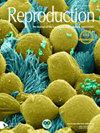Development of a deep-learning model for detecting positive tubules during sperm recovery for nonobstructive azoospermia.
IF 3.7
3区 生物学
Q1 DEVELOPMENTAL BIOLOGY
引用次数: 0
Abstract
To enhance surgical testicular sperm retrieval outcome for men with nonobstructive azoospermia, a deep-learning model was developed to identify positive seminiferous tubules by labeling 110 images with sperm-containing tubules sampled during microdissection testicular sperm extraction as training and validation data. After training, the model achieved an average precision of 0.60.
开发一种深度学习模型,用于检测非梗阻性无精子症患者精子复苏过程中的阳性小管。
为了提高非梗阻性无精子症男性的睾丸取精手术效果,研究人员开发了一种深度学习模型,通过标记110张显微解剖睾丸取精过程中采样的含精小管图像作为训练和验证数据,来识别阳性精小管。经过训练后,该模型的平均精确度达到了 0.60。
本文章由计算机程序翻译,如有差异,请以英文原文为准。
求助全文
约1分钟内获得全文
求助全文
来源期刊

Reproduction
生物-发育生物学
CiteScore
7.40
自引率
2.60%
发文量
199
审稿时长
4-8 weeks
期刊介绍:
Reproduction is the official journal of the Society of Reproduction and Fertility (SRF). It was formed in 2001 when the Society merged its two journals, the Journal of Reproduction and Fertility and Reviews of Reproduction.
Reproduction publishes original research articles and topical reviews on the subject of reproductive and developmental biology, and reproductive medicine. The journal will consider publication of high-quality meta-analyses; these should be submitted to the research papers category. The journal considers studies in humans and all animal species, and will publish clinical studies if they advance our understanding of the underlying causes and/or mechanisms of disease.
Scientific excellence and broad interest to our readership are the most important criteria during the peer review process. The journal publishes articles that make a clear advance in the field, whether of mechanistic, descriptive or technical focus. Articles that substantiate new or controversial reports are welcomed if they are noteworthy and advance the field. Topics include, but are not limited to, reproductive immunology, reproductive toxicology, stem cells, environmental effects on reproductive potential and health (eg obesity), extracellular vesicles, fertility preservation and epigenetic effects on reproductive and developmental processes.
 求助内容:
求助内容: 应助结果提醒方式:
应助结果提醒方式:


